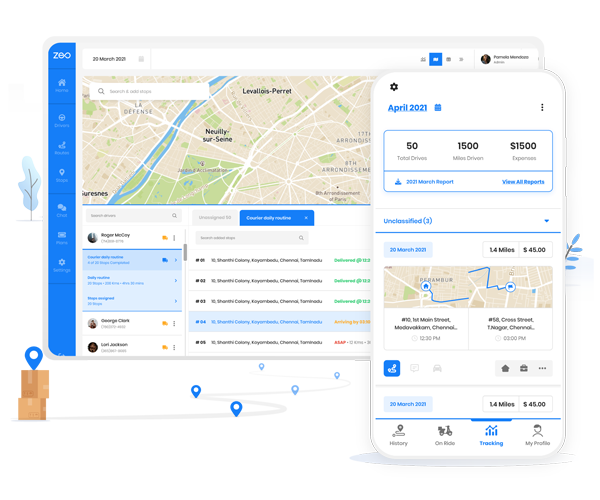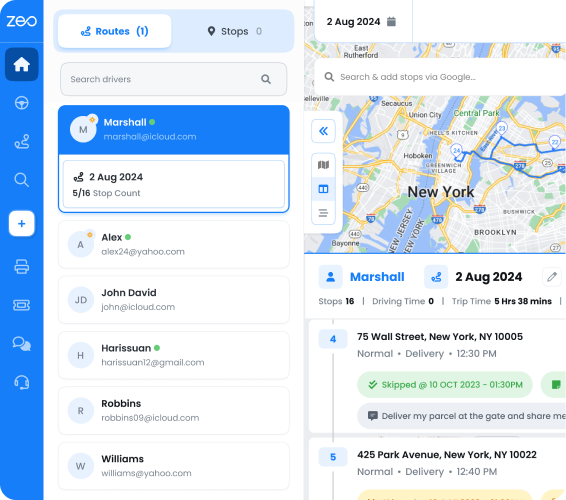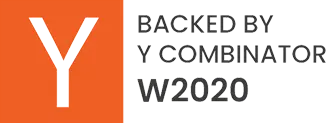The automotive logistics industry is no longer about simply moving vehicles or deliveries from point A to B, it’s a high-stakes game of operational precision, routing strategy, delivery efficiency, and process innovation.
As we step into 2025, the challenges faced while streamlining automotive logistics are more complex than ever, fueled by changing consumer expectations, sustainability goals, and technological advancements. To stay ahead, automotive industry leaders must pivot toward trends that not only address these challenges but also set the stage for transformative growth.
Let’s explore the top five automotive logistics trends shaping the future and how embracing them can propel automotive logistics businesses toward unparalleled success.
Top Five Trends in Automotive Logistics for 2025
To remain competitive, logistics leaders must embrace these emerging trends, which promise to reshape the way vehicles, parts, and supplies are transported globally.
- Precision-Driven Route Optimization
In 2025, precision-driven route optimization will be a defining factor in automotive logistics. As the demand for faster, more efficient deliveries grows, AI-powered routing tools will play a critical role in optimizing every aspect of the journey.For automotive logistics, this trend will directly impact manufacturing timelines, dealership deliveries, and the overall customer experience. The more precise the routes, the more streamlined the supply chain will be, boosting profitability and operational efficiency across the board.
- Surge of Electric Fleets
The push for sustainability will continue to reshape automotive logistics in 2025, with electrification at the forefront. As electric vehicles (EVs) become more mainstream, logistics companies will increasingly transition their fleets to reduce environmental impact and cut operational costs.However, managing EV fleets comes with unique challenges, such as range limitations and the availability of charging stations. In 2025, route planners designed specifically for EVs will be essential, enabling companies to calculate optimal routes based on vehicle range and charging needs.
For automotive logistics, adopting fleet electrification will no longer be a choice—it will be a necessity to stay aligned with sustainability goals and to meet growing regulatory demands.
- Data-Driven Decision-Making
In 2025, data will be the driving force behind innovation in automotive logistics. From predictive analytics to real-time route tracking, leveraging data allows businesses to optimize inventory management, forecast demand, and boost operational efficiency.For example, understanding delivery patterns will enable automotive logistics companies to allocate resources more effectively during peak demand periods.
With the rise of IoT and AI-powered systems, data-driven decision-making will become indispensable for staying competitive and agile in a rapidly evolving market.
- Seamless Last-Mile Delivery Innovation
Last-mile delivery is one of the most challenging aspects of logistics, particularly in urban environments where traffic and infrastructure limitations are prevalent. The near future will see an increase in the use of innovations such as autonomous vehicles and drones reshaping how deliveries reach their destinations.increase fuel savings
Save $200 on fuel, Monthly!
Optimize routes with our algorithm, reducing travel time and costs efficiently.
Get Started for FreeCoupled with advanced route planners, these technologies can streamline last-mile operations, ensuring timely and efficient deliveries to dealerships, repair shops, or end customers.
Automotive logistics leaders must prioritize last-mile delivery excellence to stay ahead in the competitive landscape.
- Increased Focus on Risk Management and Supply Chain Resilience
The global logistics landscape has been plagued by disruptions, from natural disasters to geopolitical tensions. In automotive logistics, where supply chains are heavily interconnected, even minor disruptions can have cascading effects.As we step into 2025, risk management strategies, supported by adaptive route optimization tools will be more important in helping logistics firms to stay agile. By planning alternate routes and maintaining real-time visibility, companies can ensure resilience and continuity even in the face of unforeseen challenges.
Role of Route Planners in Transforming Automotive Logistics
In automotive logistics, where every second counts and precision is critical, route planners have become essential for success. As the industry embraces new trends, route optimization tools like Zeo Route Planner are leading the charge by addressing the complexities of real-time visibility, the shift to electric vehicles, and the demand for efficient last-mile delivery.
By streamlining operations and optimizing routes, Zeo helps businesses cut costs, boost efficiency, and improve delivery reliability, ensuring they stay ahead in a highly competitive landscape.
Here’s how specific functionalities of Zeo Route Planner can revolutionize automotive logistics:
- Live Tracking for Visibility
Track vehicle deliveries in real-time, ensuring seamless coordination between service centers and dealerships.
- Real-Time Route Optimization
Quickly adjust delivery routes to avoid traffic, ensuring timely vehicle deliveries and parts distribution.
- Last-Mile Delivery Tools
Efficiently manage last-mile logistics to ensure prompt and accurate vehicle delivery to customers or dealerships.
- Automated Delivery Updates
Provide real-time delivery status updates, enhancing transparency and customer satisfaction in the automotive supply chain.
- Mobile App for Drivers
Equip drivers with an intuitive app for real-time navigation, ensuring efficient route execution and timely deliveries.
Conclusion: Why Choose Zeo?
The future of automotive logistics is here, and it’s driven by innovation, precision, and resilience. Staying competitive means embracing tools that can seamlessly adapt to the ever-evolving landscape of logistics. Zeo’s route optimization solutions are designed to do just that, empowering businesses to thrive amid challenges and leverage emerging opportunities.
With features like real-time tracking, optimized routing, and data-driven insights, Zeo isn’t just a route planner, it’s a partner in your logistics success story. To remain at the forefront of automotive logistics trends, it’s time to make the switch.
Ready to transform your logistics game? Schedule a demo with Zeo today and experience the future firsthand.

Are you a fleet owner?
Want to manage your drivers and deliveries easily?
Grow your business effortlessly with Zeo Routes Planner – optimize routes and manage multiple drivers with ease.

increase fuel savings
Save 2 Hours on Deliveries, Everyday!
Optimize routes with our algorithm, reducing travel time and costs efficiently.
Get Started for Free

























